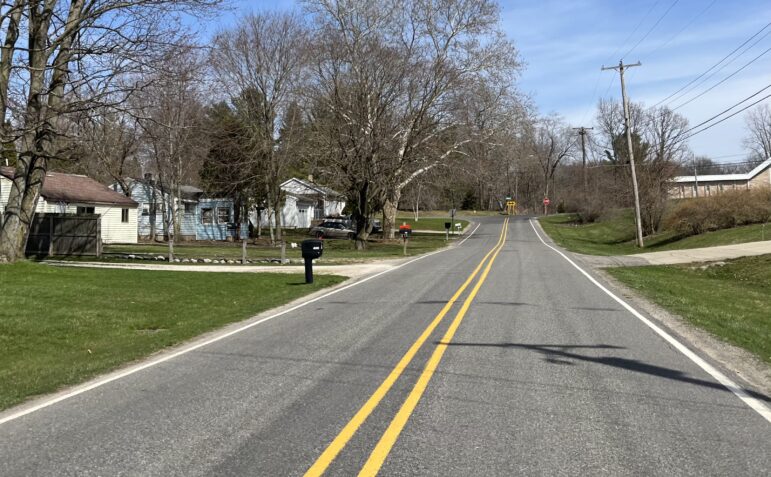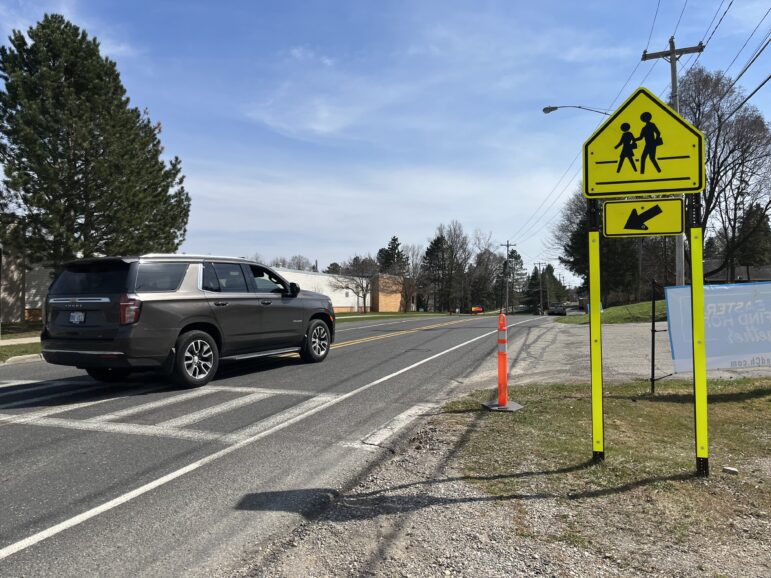
Bath Township has many stretches of road without sidewalks, which means kids who walk or bike to school travel on road shoulders that are often less than a foot wide — or in mud and snow next to the road. Traffic can reach up to 45 mph in some of these areas, and during dark winter mornings, walking to school can become dangerous.
Long-time resident Chris Hagerman recalls “maybe a couple” new sidewalks added to Bath Township during the several decades he’s lived there. He thinks that to ensure pedestrian safety, there should be a lot more.
This is why Hagerman is co-chair of the Bath Safe Routes to School Program. The program is part of a nationwide effort to provide kids with safe travel to and from school. In Bath, much of the effort is focused on receiving grants for new sidewalks.
The committee submitted major and mini grant applications for the 2023-2024 school year. The major grant application requested $340,000 for sidewalks and infrastructure and $20,000 for other program resources, such as crossing guards and safety vests. The application for the mini grant requested $15,000. According to Hagerman, the annual mini grant helps sustain the program.
Prior to submitting the applications, the committee surveyed the community to see what areas required new sidewalks the most. Committee member Christine McCallister said they are within one and a half miles around the schools and find which of those areas have the largest concentration of school-aged children.
According to McCallister, the new infrastructure will connect pre-existing sidewalks, damaged sidewalks, and make new ones. These will provide crucial walkways that will improve safety.
McCallister said the walkways will help in other ways, too. Although students have the option of taking the bus, because it can be up to a 45-minute trip, many choose to travel by car. New walkways will reduce the amount of students who travel by car, which will improve the flow of what McCallister described as “nightmare” school drop-off zones. This will also help lower emissions, McCallister said.
Committee member Elise Erickson said more sidewalks will also encourage kids to be active.
“The goal of safe routes to school is to make it fun and convenient for all the kids to be able to get to and from the schools,” Erickson said. “They would be able to walk or bike to school, which then in turn allows them to burn energy [and] hang out with friends before and after school. The physical activity, in addition to the fresh air, is what children need for good health.”

Sidewalks are not enough to keep kids safe, though, which is why Safe Routes to School Program funds also go toward training volunteers. With help from the police department, residents can receive crossing guard training. They can also be trained in leading a walking bus, which is a system of chaperoned walking groups. According to Hagerman, most volunteers are teachers or parents.
Hagerman said the community response to the program has been overwhelmingly positive. They’ve coordinated with property owners and have heard praise from the community, as well as the Bath Board of Education. Additionally, the township agreed to fund some of the project.
“It’s important to involve all these people to make sure we make the best decision for the community for the sidewalk so everyone’s happy with it,” Hagerman said. “I think that’s really good that we’ve been able to do that and have positive support … I think it’s just a great opportunity for the community and the school, and I think it’s just gonna start some great things for our township.”